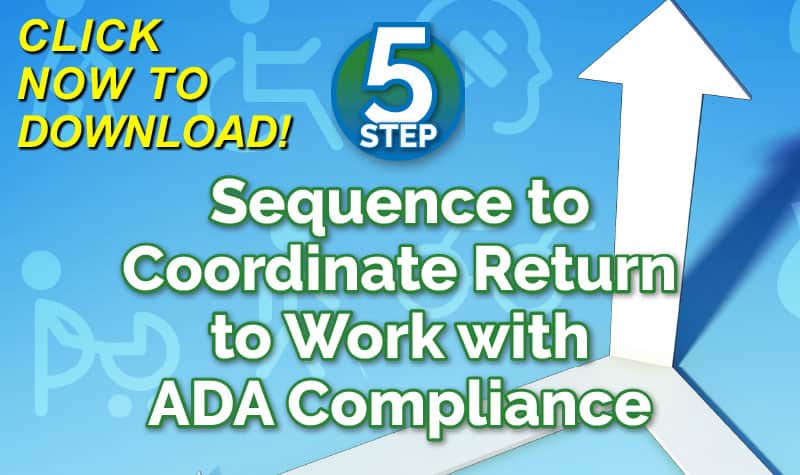In January, Democratic state Rep. Sal Pace of Colorado introduced a bill designed to significantly restricted the use of surveillance on workers’ compensation claims. The bill, endorsed by the plaintiff’s bar and labor unions, would make surveillance nearly impossible by requiring the employer to have “a reasonable basis to suspect an injured employee had committed fraud or made a material misstatement concerning a claim.”
In other words, you needed proof the employee had already committed fraud before surveillance could be used to verify the employee’s disability. The bill, approved by the Colorado House Judiciary Committee, died May 5, 2010 when the Senate committee voted 4-3 not to advance it for a vote by the full state Senate.
Surveillance often stops fraudulent claims. So why would a state ever consider barring surveillance? The answer comes from the mishandling of surveillance by both the workers’ comp adjuster and the private investigators (PI) hired by the adjuster. In a search of the internet for workers’ comp surveillance, there was just about as many horror stories about it being abused as there were cases where it was beneficial.
Click Link to Access Free PDF Download
“5-Step Sequence to Coordinate Return-to-Work with ADA Compliance”
Surveillance abuses by PI’s included:
- The lazy PI who was observed in a parking lot by a stranger placing a black box, later determined to be a GPS device, underneath the employee’s car. Instead of properly observing the claimant, the PI was using GPS to track the employee’s whereabouts. Of course the stranger told the employee, who called the police.
- The PI who dropped a vehicle battery in the employee’s yard and waited for the employee to notice it and come out to remove it.
- The PI who trespassed and buried a motion activated wireless camera under a tree in the employee’s yard.
- Illegal phone taps (invasion of privacy).
- Digging through the employee’s trash dumpster (invasion of privacy).
- The PI who acted as a stranded motorist and asked the employee to change a tire.
- The PI contacting an employee represented by an attorney. The adjuster cannot contact the employee when represented by an attorney and neither can an agent of the adjuster.
Adjusters Misuse of Surveillance
Often when the adjuster cannot think of anything else to do when the file comes up on diary, and the employee has been off work for a long period of time, the adjuster will request surveillance “to see what the employee is up to.”
Surveillance should not be used as a substitute for proper and aggressive file management by the adjuster. If the adjuster actively works the claim with the nurse case manager, the adjuster then knows what the medical status is and whether or not surveillance is need. If there are no fraud red flags in the claim and nothing in the medical reports or medical notes indicating the employee is malingering, surveillance will not pay off for the adjuster in most claims.
Before a workers’ comp adjuster considers surveillance, the adjuster should consider a background check and check credit on the employee. The background check, costing about $50, turns up information on lawsuits, judgments, liens, criminal record, home value, other property ownership, marriages, divorces, relatives and most important, business interest(s).
While most of the information will have no bearing on the workers’ compensation claim, the occasional information on vehicles owned, a sideline business or rental property owned would be extremely valuable to a PI if surveillance becomes an option.
When there are red flags in the claim, or the employer learns the employee is working at another job, or there is some other development indicating fraud, then surveillance should definitely be considered.
Before employing a PI, the adjuster needs to have a discussion with the PI on surveillance methods to be used. The adjuster needs to make it clear to the PI that during surveillance the investigator:
- may not trespass on the employee’s property,
- take pictures/video of the employee in their home,
- contact the employee if the employee is represented by an attorney,
- use any form of entrapment,
- defame or cast suspicion on the employee if they contact the employee’s neighbors,
- violate any privacy law, or
- violate any other law.
Even in cases where there is a lot of circumstantial evidence indicating the employee may not be injured as badly as the employee claims, surveillance will not always provide video or other proof that the employee is exaggerating the injury claimed. In the cases where the PI obtains video of the employee shoveling heavy snow, pushing a lawn mower or other activities beyond the restrictions placed on the employee by the medical provider, the adjuster needs to be careful how the information is used.
When surveillance produces proof the employee is exaggerating his injury status or is involved in an outright fraud, the adjuster must consult with the defense attorney. There has been more than one adjuster who has taken surveillance information and invalidated it by misusing it. The natural tendency is to send a copy of the video to the medical provider and the employee’s attorney as proof the employee is a fraud. That can be a big mistake.
When surveillance produces usable evidence, the adjuster requests further surveillance of the employee. A fifteen second video of the employee carrying a heavy box of trash to the curb can easily be discounted by the employee as “a good day” and does not show him in bed for the next couple of days because he picked up the box. Instruct the PI to obtain video on additional days to diminish the “one good day” rebuttal by the employee and the employee’s attorney.
Once there are several videos of the employee doing activities beyond the doctor’s restrictions, then the adjuster and defense attorney obtain as much contradictory information from the employee as possible, including statements the employee gave to the medical providers, the information the employee gave to the employer, and the information the employee gave to the adjuster, or the employee’s attorney gave to the adjuster. Once all the claims made by the employee as to the inability to work are documented, take a deposition from the employee as a further on record of the employee’s statements about the inability to work.
Once the employee’s deposition is complete, the defense attorney presents the video surveillance to the employee’s attorney. After the employee and attorney view the video, then the employee’s attorney is advised a copy of the surveillance tape will be shown to the medical provider(s).
If the video is sent to the medical provider(s) prior to the employee and attorney seeing it, such an action may be viewed as a discovery violation in some jurisdictions. Showing the video to the employee’s attorney and the employee first keeps the employee’s attorney from arguing to the workers’ comp board or court as to the video’s inadmissibility.
After the employee’s deposition describing all the restrictions, limitations and inability to work is documented, the quality surveillance video proving otherwise often results in the employee and employee’s attorney wanting to make a quick and reasonable settlement of the workers’ comp claim.
The adjuster, employer, and defense attorney then consult on what course of action they want to take including fraud prosecution, recovery of benefits paid, the employee’s voluntary resignation, nominal settlement, etc.
The adjuster begins by using proper medical management of the claim to get the employee back to work. If medical management has not returned the employee back to work, or there are red flags on the file, or information comes available indicating the injury may not be as severe as the employee claims, consider using surveillance. Surveillance when properly used can be invaluable to the adjuster in disproving the fraudulent workers’ comp claim.
Author Rebecca Shafer, J.D. Consultant, Amaxx Risks Solutions, Inc. has worked successfully for 20 years with many industries to reduce Workers’ Compensation costs, including airlines, healthcare, manufacturing, printing/publishing, pharmaceuticals, retail, hospitality and manufacturing. She can be contacted at: RShafer@ ReduceYourWorkersComp.com or 860-553-6604.
WC Calculator:http://www.reduceyourworkerscomp.com/calculator.php
Do not use this information without independent verification. All state laws vary. You should consult with your insurance broker or agent about workers’ comp issues.
©2009 Amaxx Risk Solutions, Inc. All rights reserved under International Copyright Law.
ESSENTIAL: This article is Return-to-Work Essentials content.













